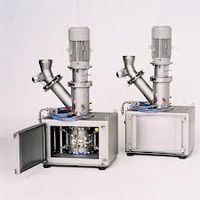Continuous Agglomerators
Continuous Agglomerators are designed to densify a wide range of plastic materials such as films, monofilaments, fibers, nonwoven fabrics. The special design of the screw and of the cylinder generates a high compression of the material which densifies thanks to the generated heat.
Advantages
- Compact design, wide flexibility of use, minimum maintenance requirements, easy integration in automatized and continuous plants.
- Compared with the other existing systems, the low rotation speed ensures minimum thermal stresses of the material.
- The electric resistances compensate the supply of heat requested when the flow or the features of the fed material varies.
- It eliminates the residual humudity in the material and it allows to reach excellent apparent densities of the densified material.
- Constant energy consumption.
Applications
With hot grinder
In the recycling plants for films, it solves the problem of drying and storage. The fluff of wet voluminous film is densified, dried and ground, obtaining a product which: can be stored and honogenized in big quantities in traditional mixing silos, can be easily fed to the extrudes with improvement of the production and of the quality, can be transported, siloed, packed as any other plastic ground material.
Combined with an extruder
The material is fed by gravity without forced feeding. The transversal discharge conveys the melt material in the extruder feeding opening. The degassing group eliminates the humidity and the gases developed while agglomerating voluminous materials. The additional degassing improves the quality with printed and wet materials.
Video
